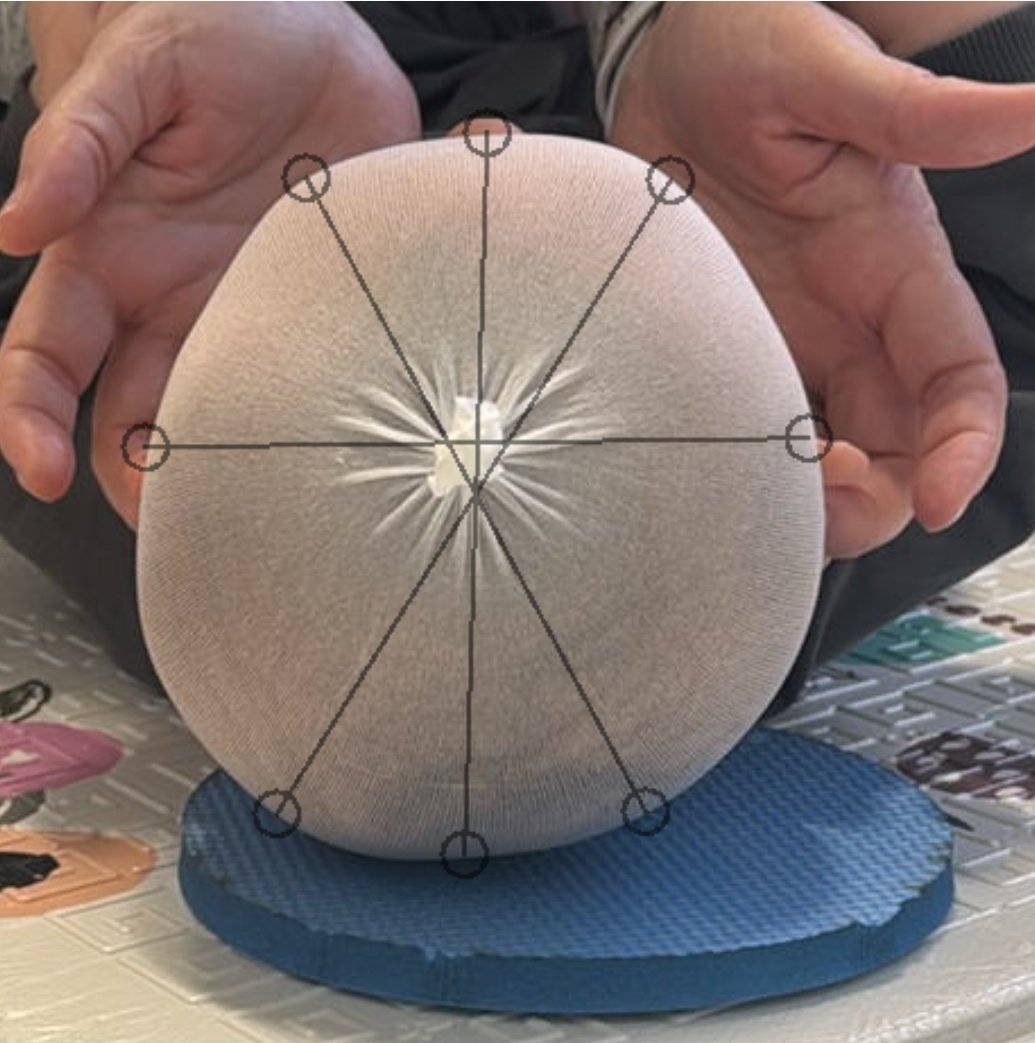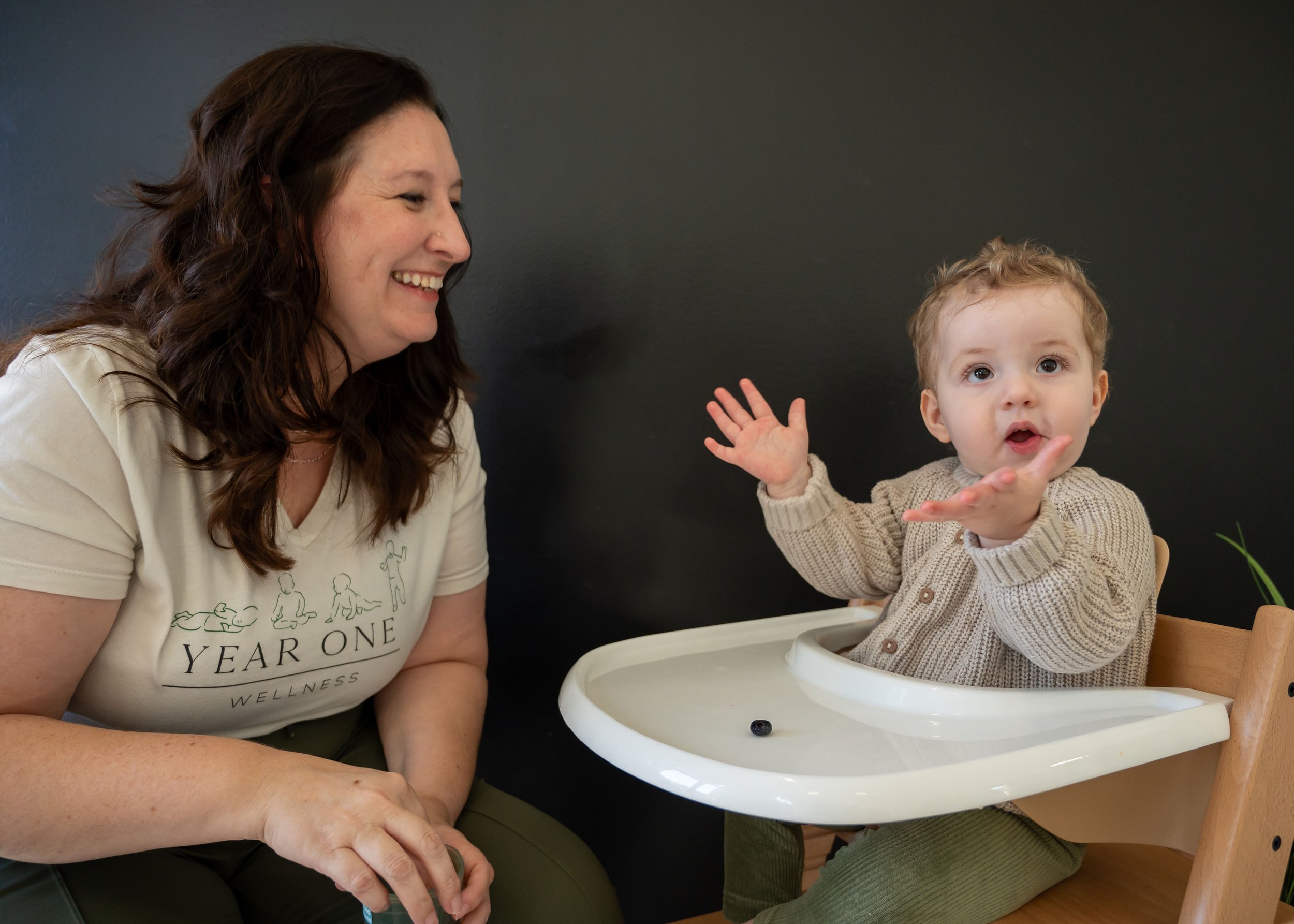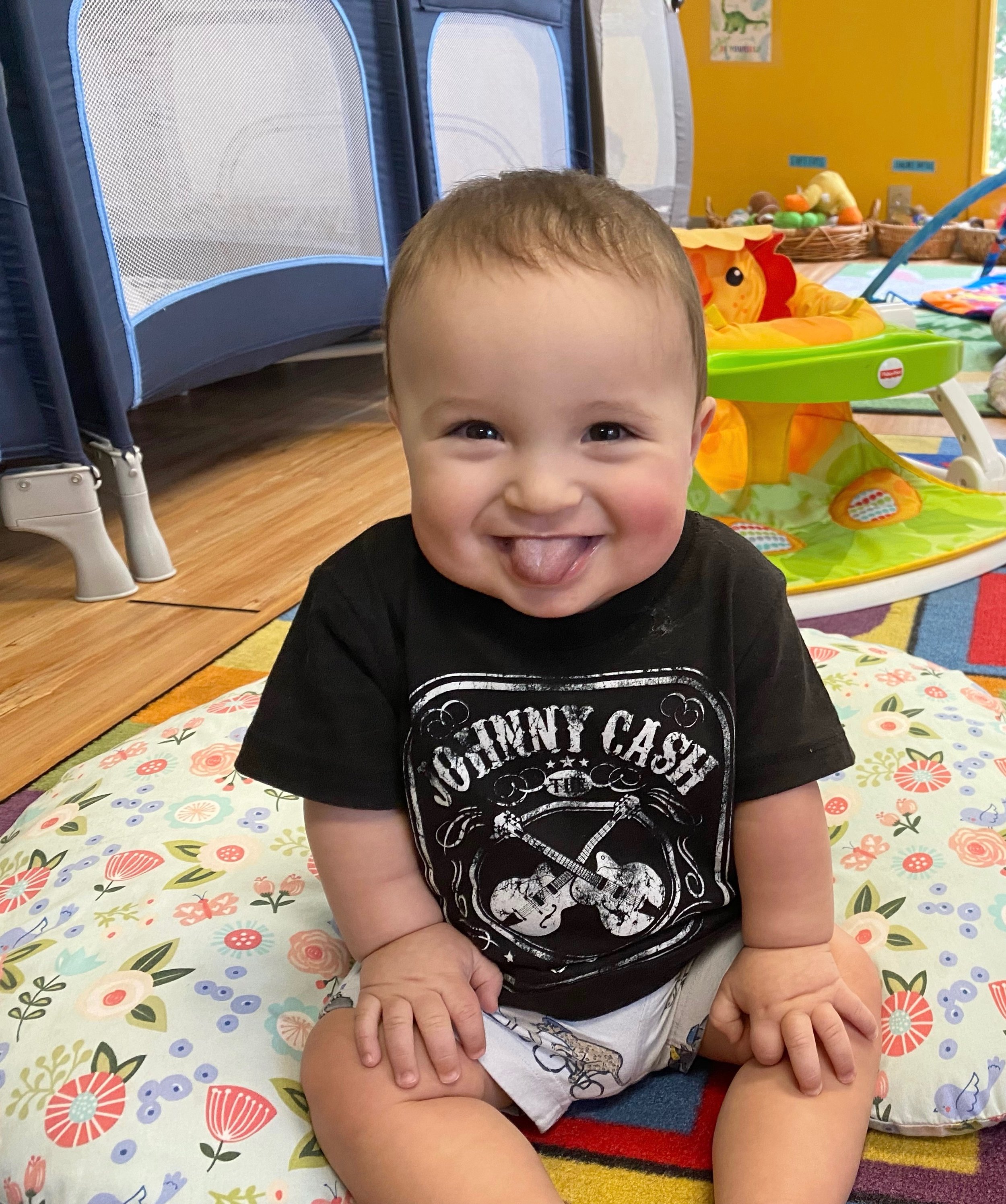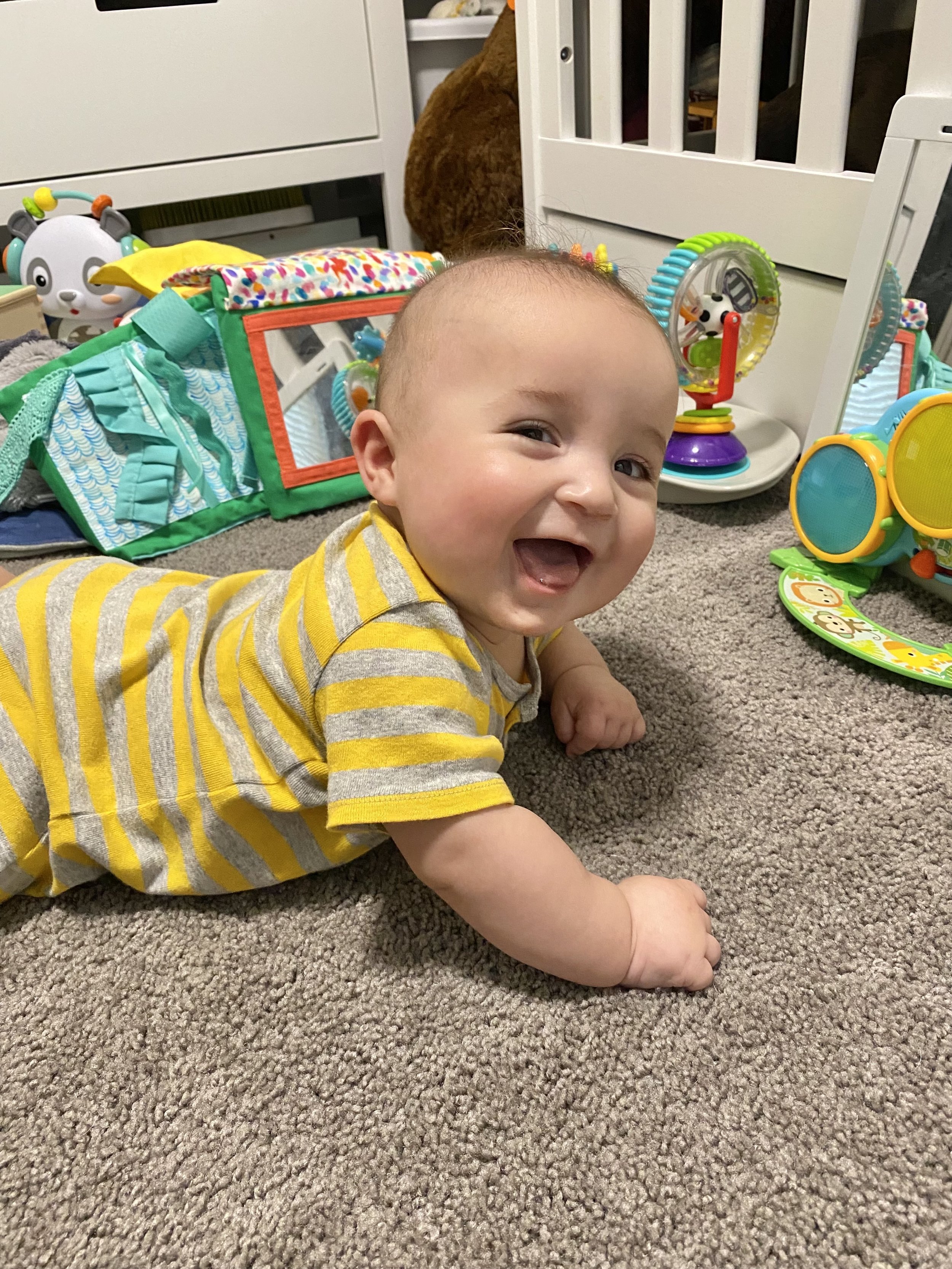THE YEAR ONE WELLNESS BLOG

The Sleep-Feeding Connection: How Feeding Difficulties Can Disrupt Baby’s Rest
When you're navigating the early months of parenthood, it's easy to think of sleep and feeding as two separate challenges. But here’s the truth: feeding challenges are often at the root of sleep difficulties — and understanding this connection can be the key to getting your baby (and you) more rest.
Let’s explore how feeding problems can impact sleep — and what you can do to help your baby rest better.

Understanding CVAI and CI Numbers for Infant Head Shape: A Guide to Positional Plagiocephaly
There has been a growing awareness regarding the development of head shape in infants, with one condition in particular—plagiocephaly—gaining attention. Plagiocephaly is the asymmetrical flattening of a baby’s skull, typically caused by pressure on one side of the head for extended periods of time. This type of head flattening is becoming more common due to babies spending more time on their backs and with the increase in diagnosis of torticollis, or tight muscles. .

Understanding Sensory Processing in Infants
Infancy is a remarkable period of growth and development. It’s during this time that babies begin to explore the world through their senses — sight, sound, touch, taste, and smell. Sensory processing, the way the brain organizes and interprets sensory input, plays a critical role in this exploration and learning process. Sensory development in infancy can impact sensory processing in the toddler years.

Transitioning to Solids: A Guide for Your 6-Month-Old Baby
Introducing solids is an exciting milestone in your baby’s journey. At around six months, most babies are ready to explore new tastes and textures beyond breast milk or formula. This stage can be both thrilling and a little daunting for parents, so here’s a guide to help you navigate the transition smoothly.

The MyoMunchee Bebe: A Game-Changer for Infant Oral Health and Early Development
As parents, it is natural to always be looking for ways to support healthy growth in your children, especially in those critical early years. Oral health is no exception. The first few years of a child’s life are vital for shaping proper facial structure, jaw alignment, and oral habits that will impact their health for years to come. That’s where the MyoMunchee Bebe comes in.

Benefits of Physical/Occupational Therapy for Premature Babies
Welcoming a premature baby can be sudden, exciting, and even scary at times. In this blog, we will explore what exactly prematurity means and the benefits of physical and occupational therapy to improve the developmental outcome of these babies!

Benefits of Occupational Therapy for Babies and Toddlers
Pediatric occupational therapy (OT) is a type of treatment performed by licensed occupational therapists to help children (including infants and toddlers) meet developmental milestones, overcome sensory challenges, and improve their ability to perform self-care, play, and self-regulate. Here is a closer look at what occupational therapists do and how they could benefit your child.

Nurturing Your Baby’s Development: Positioning (Part Two)
Welcome to part two of how to nurture your baby’s development through positioning! Last post, we talked about tummy time, back time, and sidelying. All of those positions are related specifically to FLOOR time. Now, let’s talk more about upright positions that your baby will begin to explore as they grow and get older.

Nurturing Your Baby’s Development: Positioning (Part One)
Tummy time, tummy time, tummy time. Many times as a new parent, so much focus is on how much tummy time your baby does. BUT…did you know that there are other positions that your baby can benefit from besides just tummy time? Let’s dive into each position, including pros, cons, and when your baby would most benefit from these particular positions.

Muscle Tightness from the Inside Out
Imagine you are Alice in Wonderland for a moment. Remember the part where she shrinks very tiny, then grows very large? At one brief moment, when she gets too tall to fit in the house, her head tilts to the left and she curls her body to the side to fill any extra space in the house before she shrinks again.

Infant Feeding Difficulties
Feeding challenges have become increasingly more common with parents reporting difficulty around feeding for up to 50% of otherwise healthy children. This number only increases if there are delays or asymmetries in development.

Chew on This!
Did you know that 60% of jaw growth is complete by age 6 with most of the growth occurring in the first 4 years of life? As babies grow and develop, they move from sucking patterns to chewing patterns. Teething occurs and babies begin solid foods in the form of puréed foods and/or strategically cut up, whole foods. Chewing is one of the first exercises (after sucking) that can help to develop the jaw and facial structures. Before looking at the specific benefits of chewing, it is important to know what optimal development looks like.

Can My Child Benefit from Physical Therapy?
With so much information out there, it can be really hard to narrow down what information to listen to and what information applies to your unique situation. Navigating through the ocean of information from blogs, social media, videos, and more to figure out what will work for your family and your baby can be overwhelming and scary. At Year One Wellness, we strive to ease those feelings and provide recent and relevant information to help each specific child that comes to us.

Nurturing Bonds: A Guide to Breastfeeding Bliss for New Parents
A few simple tips to evolve your breastfeeding experience

Hip Dysplasia in Babies: What You Need to Know
Hip dysplasia is a condition where a baby's hip joint doesn't develop normally. The hip is a ball and socket joint. In hip dysplasia, the hip socket is too shallow to properly support the end of the thigh bone, and the bone is somewhat displaced or dislocated out of the socket. This can potentially cause discomfort, pain, and lack of mobility. But don't fret! With early detection, proper care, and some help from an infant Physical Therapist, we can help your baby's hips grow up healthy and strong.

Brachycephaly, scaphocephaly, plagiocephaly, oh my!
What different head shapes look and what you, as a parent, can do about it.

Eyes Wide Open: A Journey Through Baby's First Year Vision Milestones
Learn about the visual milestones and activities to promote vision development.

The Power of Play: Nurturing Infant Brain Development and Adult Well-Being
Hello, parents and fellow play enthusiasts! Today, we're going to dive into the fascinating world of play, exploring its critical role in infant brain development and its enduring importance throughout our lives.

Major Milestones to Look for from Birth Through Walking
Check out a list of motor and language milestones from birth through walking, along with tips on how to encourage developmental progress

The Impact of Screen Time on Infant Development: Nurturing Little Minds in a Digital Age
Diving into a crucial topic that affects every modern family—screen time and its impact on infant development

